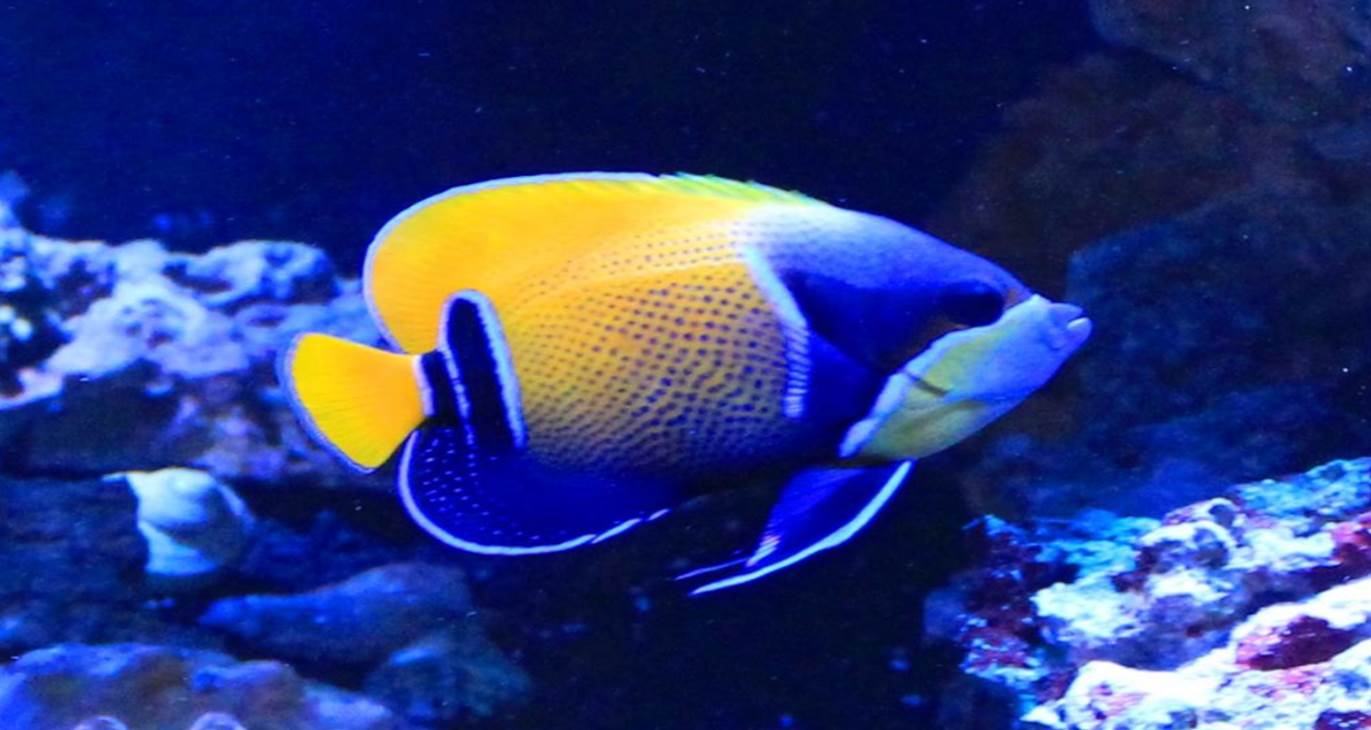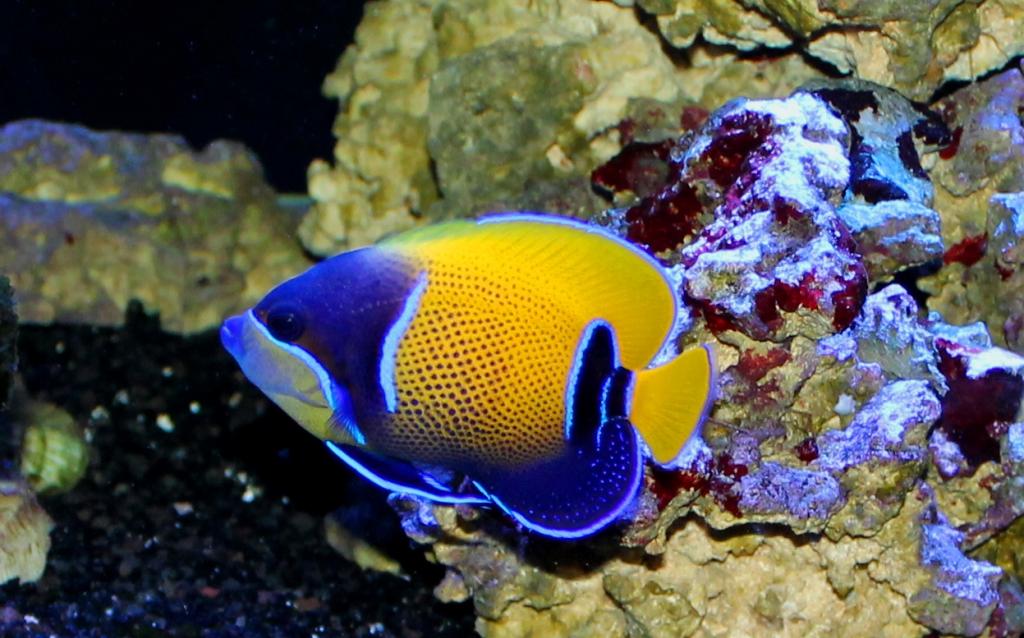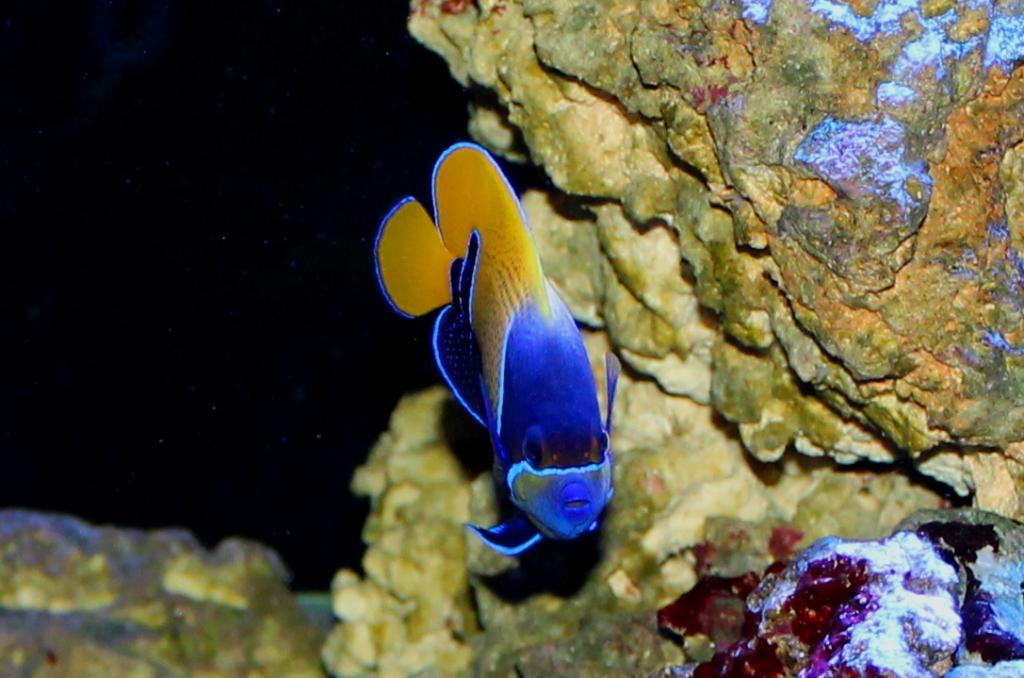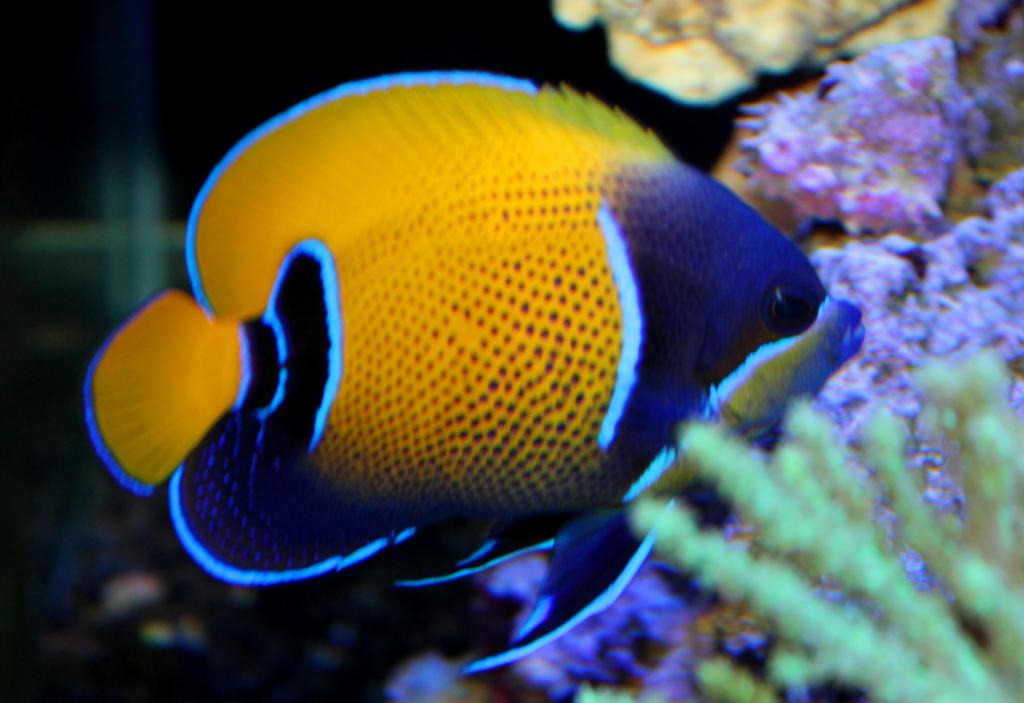
Majestic Angelfish
Common Name: Majestic Angelfish, Blue Gilled Angelfish
Scientific Name: Pomacanthus Navarchus
Reef Safe: No
Temperament: Semi-Aggressive
Care Level: Moderate
Max Size: 12 to 14 inches (8 to 10 is more common)
Appearance:
This is a very colorful angelfish. It has a yellow color with darker blue markings on the body and a blue band on the head which included the eyes. There also will be a light blue edging that will separate the dark blue and orange coloring on most of this fish’s body. The fins are also blue with a lighter blue to orange like boarder around the edges.
Juvenile majestic angels will have a different appearance. They will have a black to dark blue colored body with orange to yellowish to orange tint or undertone to the color which shows under certain lighting conditions. Their bodies will also have vertical stripes that are more of a light blue color with a very slight orange tint to them as well.



Temperament
This can be a territorial fish and should be kept as the only majestic angelfish in an aquarium. It should not be kept with other territorial fish or other angels. They have been known to nip at clam mantels and, in rare cases, anemones as well. They will do best in a FOWLR set-up with other peaceful fish or a reef tank with SPS corals.
Environment
This fish will need at least a 120 gallon FOWLR set-up with many hiding spots appropriate for its fully grown size. As they can be very sensitive to water quality, it would be best to introduce this fish to a matured set-up. They will also need large amounts of live rock to pick at as well as hid in.
Recommended water conditions:
I would refer you to the below article for the typical water conditions that a Majestic Angelfish will do best in. As with most of the larger bodied angelfish, they need very good and very stable water conditions for long-term success.
https://www.reefaquarium.com/2013/the-basics-of-marine-aquarium-water-parameters/
Diet
This angelfish (as with most angelfish) are omnivores. They can be picky eaters making them difficult to switch them over to frozen and flake or pellet foods.
Once they start eating, they will accept almost any food you may offer it. However, they are omnivores and will require a diet consisting a good amount of algaes with some other verities of meaty foods and foods containing sponges as well. A good quality flake or pellet food meant for marine angel fish that contains the same nutrients as sponges is also a good option for the their main diet.
As with most of the large Pomacanthids, they need to have that algae in their diet. A lack of algae in their diet is often a key in the development of HLLE.